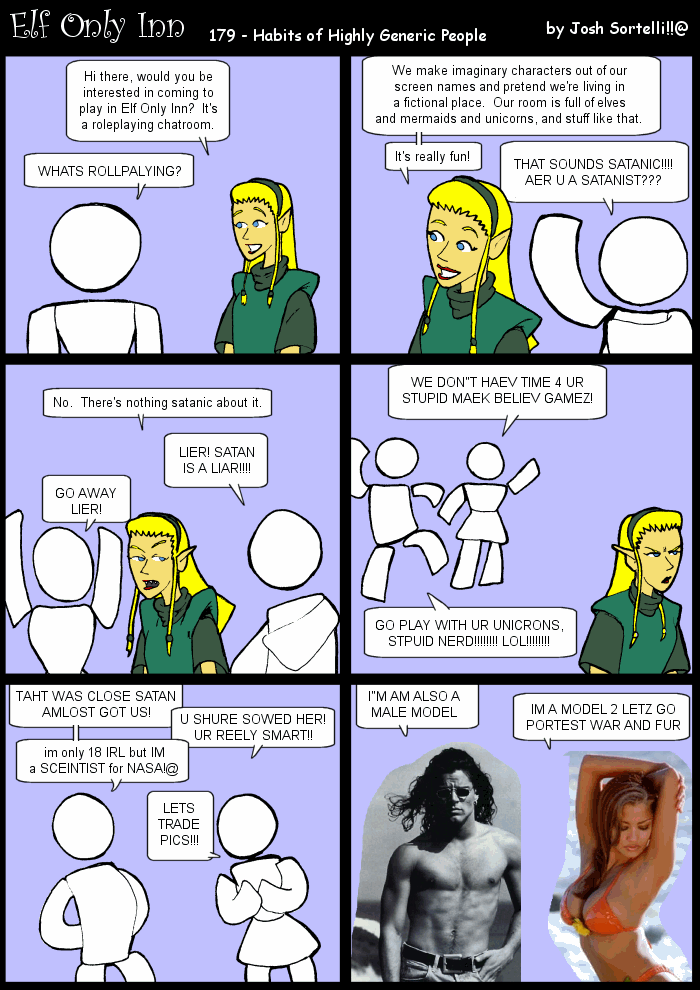Unit Organization
Nar Mat Kordh-Ishi
Warlord: Radush "Eye-Drinker" born an outcast, had the idea of starting the Company after finding himself leading units of Orcs being paid less by other mercenary captains, decided 'screw the middleman.' Radush carries himself like a warlord and the Tuskers of the Company see him that way.
Drillmaster: Koloch "the Butcher", a ferocious human-trained half-orc that oversees the training and discipline of the Company. He is a Tusker that every other Tusker comes into contact with, and he's got a reputation nearly on par with that of Radush Eye-Drinker.
Favorite Color: Red, it goes faster. (Everyone has at least a sleeve of their armor painted red. You can tell who is higher up in the organization by how much red they've got.)
Banner: Black with red orcish runes upon it. Also, the honored dead's tusks are carved into shapes and affixed to the banner of their company by chains. Being orcs, of course there's a skull on top of the flagpole. It's tradition.
Structure:
Companies:
Each company has a chief (equivalent of a captain), and and is composed of a number of smaller warbands.
- The Chosen (First Company - Elite warriors, scouts and specialist fighters as well as a reserve for when things get rough in a fight)
- Pikes (~200-300 orcs broken down into smaller units as necessary for manuever)
- Spikes (~160 orcs - Longbows)
- Wargs (~100 orcs and their warg mounts, cavalry)
- Blades (~100-200 orcs wielding bladed weaponry for close-combat and assaults)
- Campers (~450 or so orcs - Camp, Supply Train and other logistic specialties, including families.)
Warbands:
- Within each company, there are a number of warbands of 15-30 tuskers per unit under the command of a warleader, the fellow that calls the shots for that small unit, which is the company's equivalent of a sergeant.
The favored weapon of the orcs is a large, curved sword akin to a falcata or kilij with a forward curvature and a cleaver-like cutting surface, akin to a falcata. Large and heavy, the Company's swords are a little too much for a human to handle one-handed, but the orcs manage just fine. It can block a blow because it's built thick and it can cleave more than a typical human sword, but wasn't designed for deft parrying. Surprisingly, halberds are also favored weapons with the company, as they provide a degree of flexibility to orcish warriors in a fight for engaging a variety of targets. Veterans brought this weapon into the ranks of the company -- tribal orcs would sneer at something more complicated than an axe, but smart warriors understand the versatility of the weapon, and the importance of mastering it.
The armor is generally so thick that they don't worry about shields so much -- it isn't pretty stuff like elven and human armor, and it isn't expertly forged like the dwarven stuff, but orcs are big, and they can carry more weight. It means their armor is more dense, and the Company's smiths use that extra weight tolerance to slope and angle the plates to deflect arrows and bolts, where a human or elf would crumple under the sheer weight. Anyway, even disciplined orcs aren't big on hiding behind shields. The typical suit of 'company steel' tends to be a suit of chain and plate, though the legs are chainmail alone and the forearms are often exposed, at least in the Pikes n' Spikes. The Blades tend to wear full suits, because they've scrounged or purchased the additional armoring on forearms and legs and because their fighting is closer in and less maneuverability based. No one bothers with engraving and enameling the armor, because the Orcish 'aesthetic' is to paint it red and stick a skull on a spike and fringe with fur. The company doesn't bother with much in the way of heraldry like a human army. Red, fur, skulls. Got it?
The pikes are counterbalanced with a weight on the end to make them more easily handled, barbed with a crosspiece behind the head and long-bladed. Orcs aren't naturally inclined to form pike squares, but Nar Mat Kordh-Ishi's drillmasters use methods designed to appeal to the Orcish mentality -- it's beaten into headstrong (all of them) recruits. The Pikes are the training ground of the Company, it's where recruits learn the fundamental lessons of fighting in the world outside the tribes of the orcs. It doesn't matter how high one was in a tribe, how experienced a warrior outside the Company, all recruits go through the Pikes as a rite of passage.
Longbows in the company are much larger than a human or Elven equivalent. What the orcs lack in the subtle sophistication of the elves, they make up for in being able to draw far more weight. Orcish archery isn't typically pinpoint, but some tribes have a long history of hunting with bows for survival, which makes them surprisingly good in addition to these other advantages. Bow companies tend to wear heavy enough armor that makes them pretty decent in a close in fight, and they carry blade weapons...and heavy hammers used to pound spikes into the ground, which gives them a defense against cavalry that comes too close or infantry that tries to charge them. They're also good for pounding a head in.
Warg riders are the only Company forces that really use the shield much, but they avoid lances -- warg cavalry work differently than horse-based cavalry -- because they do not frontally charge, but turn faster, and fight on the flanks and the rear, as a wolf pack might. The Company's warg cavalry are designed to kill other cavalry, as a wolf might take a horse, by nipping at the flanks, hamstringing and otherwise crippling the enemy's maneuverability in order to finish it at leisure. They go in for slashing attacks, nets, bolos and javelins as a typical tactic. Warg cavalry sits lower than horse cavalry, because wargs are lower-slung to the ground, and a favorite tactic of the wargs is to get in close and strike at the underbellies. It is a surprisingly close-combat oriented group. The wargs themselves are armored to protect from strikes hitting from above while engaged in this sort of fierce combat of gutting and crippling.
The Camp, Supply Train and Specialists is a concept unknown to orcish tribal warfare, but a necessity -- Nar Mat Kordh-Ishi is often on its own to feed itself, and humans and others won't always do business with them. It is a collection of orcish and half-orcish (a chunk of the company are halfies) ex-merchants, cart drivers, blacksmiths, fletchers, herbalists and other sorts, skilled but exiled from orckind and humanity alike, that help build the camps, raise the siege engines and keep the company in food and equipment. A lot of them are orcish women. Tribal orcs often have a disdain for those that do not fight, particularly women, but Nar Mat Kordh-Ishi has strong orders and punishments to prevent this -- the Campers are protected from hazing out of recognition that these people are vital to the functioning of the Company. A new recruit disdains them, but the veterans of the company recognize that some campaigns, they survive only because the Campers found food and keep the recruits well in line. It is also a place where maimed veterans go when they can no longer serve, and serves to tell recruits that they will always have a place in the company, rather than being discarded to die when too old to fight.
Company discipline is harsh; the new recruits are sent to the pikes because the typical orc is a headstrong know-it-all and the only real way to teach them is to establish dominance first -- inevitably, a Nar Mat Kordh-Ishi drillmaster is a tough son of a warg that spends a lot of time punching down recruits that act up and talk back, not out of mindless brutality, but because the warrior spirit needs to be harnessed. Orcs are fierce, and establishing the disciplines of the ranks can be hard to do with such headstrong specimens. It may seem unbelievably brutal to humans and particularly to elves, but it's an approach tailored to how an orc thinks -- occasionally a leader has to smack his subordinates into line. The natural orcish instinct is not to stand in a line of pikes, shoulder to shoulder, and work together to defeat a charging foe through superior defense, and that's precisely why every tusker in the company has to serve there to learn that peculiar form of discipline. Even after the pikes, the discipline continues, if it is necessary, but it's not as brutal or arbitrary as tribal orc society, and the warriors of Nar Mat Kordh-Ishi are compensated -- the rest of the world, as they know, is much worse for a Tusker on their own. To humans, there is a scant difference between one orc and another, but no one that's ever heard the bass drums that time the march of the Company, or the growled, grunted chanting that accompanies the drums, forgets the chill such a spectacle brings. It doesn't matter if they've fought Orcs before -- they haven't fought these orcs.
As a result, the Tuskers of the Company tend to start embracing ranks and titles because they often are outcasts without any right to tribe; a typical name might go "Drillmaster Koloch the Butcher" which is a position of high regard within the company. Titles come with deeds, and are bestowed by comrades or, better, a Chief or a Warleader, if not the old Eyedrinker himself. Some recruits come with titles already, if they were (in)famous with even non-orc society for a deed before joining the company. Rank is often important as well, with Warleaders often squabbling over little things like whose band gets which piece of ground, something that a good chief has to contend with in leading headstrong and competitive orcs; the typical solution is decidedly novel for orcs and disputes between members of similar rank are decided by seniority unless there is a clear right and wrong involved.



